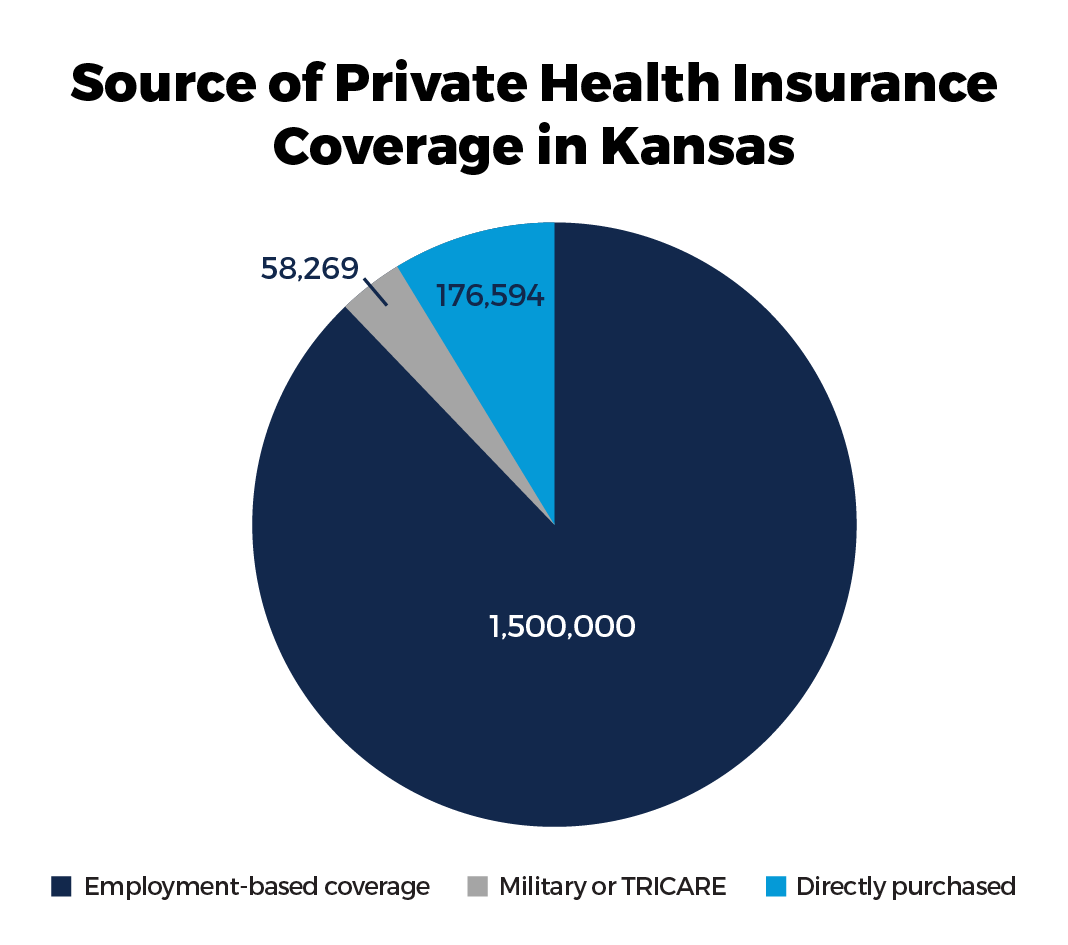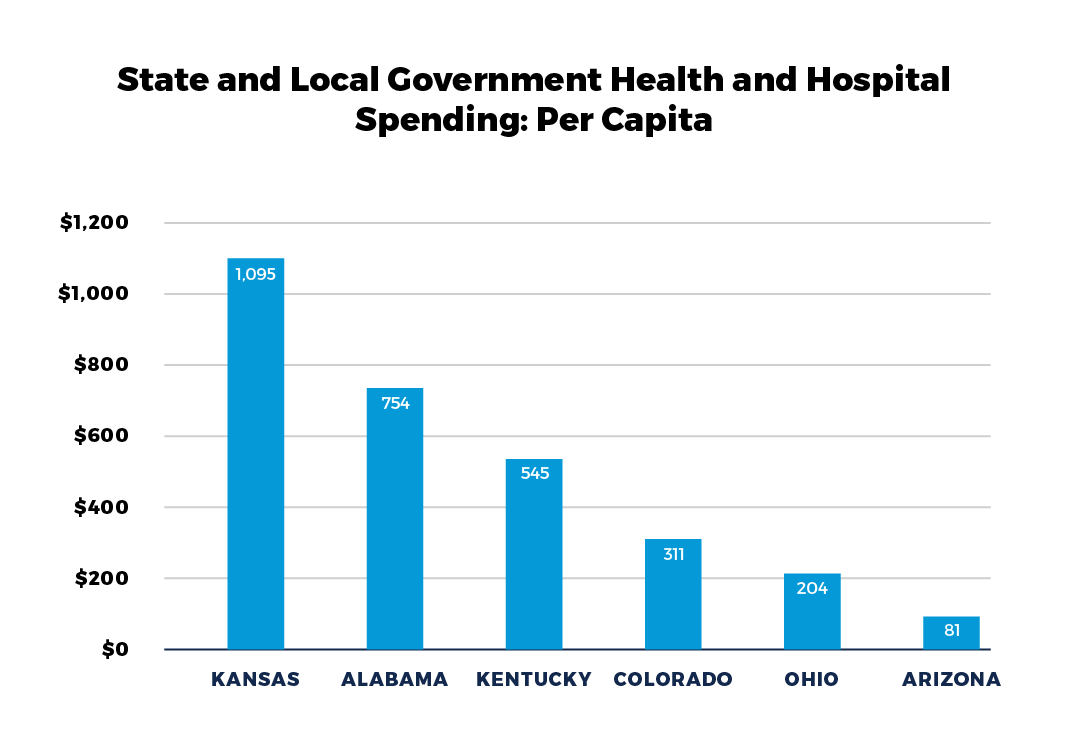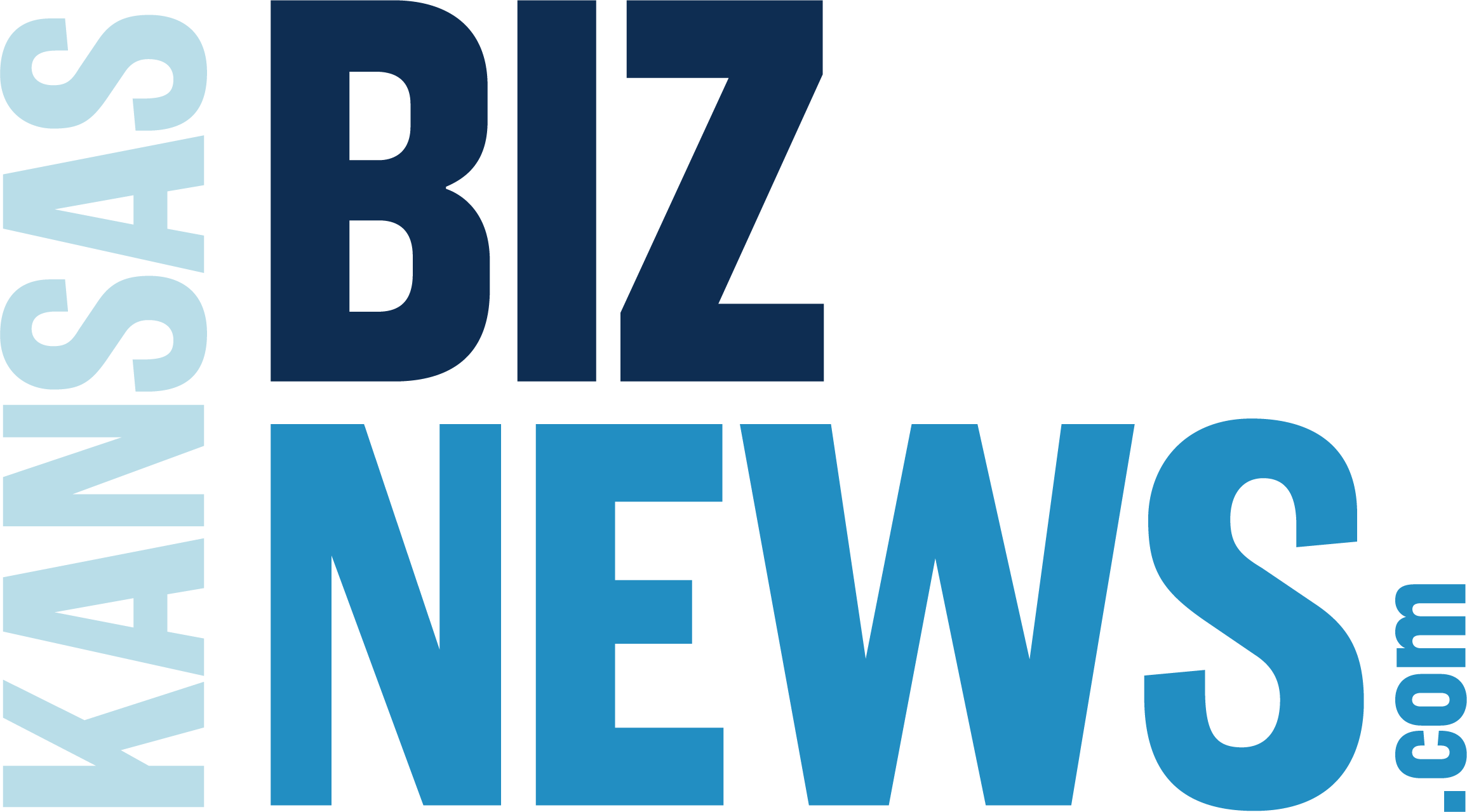The 2023 Kansas Competitiveness Blue Book compares data-driven information on the state’s economic health to the rest of the country on how it performs in a number of key indicators.
A project of the Kansas Chamber Education Foundation, Kansans are encouraged to use the Blue Book as a resource as we work together to remove barriers to our state’s business and economic success to increase prosperity for all Kansans.
This spotlight on how Kansas competes in Health Care is the third of a series of eight spotlights.
Spotlight on Health Care
Meaningful health care reform should focus on lowering the overall cost of health care so more individuals choose to purchase it and more employers can provide it as an employee benefit. It’s important to reduce costs and promote personal responsibility in health care.
Health Care Spending in Kansas Near National Average
Blue Book data point: With annual health care expenditures of $19.5 billion in Kansas, our per capita spending ranks 30th in the nation at $6,707, compared to the national average of $7,006. Kansas ranks 32nd for health care spending as a percentage of personal income.
Why it matters: The 12% of personal income going to health care in Kansas represents a sizable portion of household spending and the economy at large.
Kansas’ Uninsured Rate Higher Than Most
Blue Book data point: In 2020, Kansas’ uninsured rate was 19th highest in the nation, with 8.7% of the state population not carrying health insurance coverage.
Why it matters: High uninsured rates can lead to missed time at work, decreased productivity, and lower quality of life. We must bring health care costs down so more employers and individuals have affordable, market-based options for coverage that is right for their unique circumstances.

Kansas Employers Contribute Significantly to Health Insurance Coverage
Blue Book data point: More than half of Kansans with private health insurance get it through their employers, putting Kansas and Indiana in a tie for the 13th highest employer-insured rate in the country.
Why it matters: Kansas employers play a major role in providing health care coverage. Thus, skyrocketing health care costs place a growing burden on the state’s economy.

State & Local Government Health Care Spending in Kansas Is Highest in U.S.
Blue Book data point: Kansas spends more per capita than any other state when it comes to state and local government health and hospital funding. Total health and hospital spending ranks 15th in the nation.
Why it matters: Massive state and local government spending on health care in Kansas is causing higher taxes and more inflation of health care costs.
Takeaway
Reducing health care costs overall is essential to enabling more employers to provide health insurance coverage as a voluntary benefit and to making insurance more affordable for individuals to buy on their own. We can reduce costs by eliminating government restrictions on medical professionals’ ability to perform duties within the scope of practice of their professional training and by reducing government competition with the private health care market. And reducing government spending on health care will help adjust costs to more reasonable, market-based levels.
Click here to read more about how Kansas competes in 2023 Blue Book.



